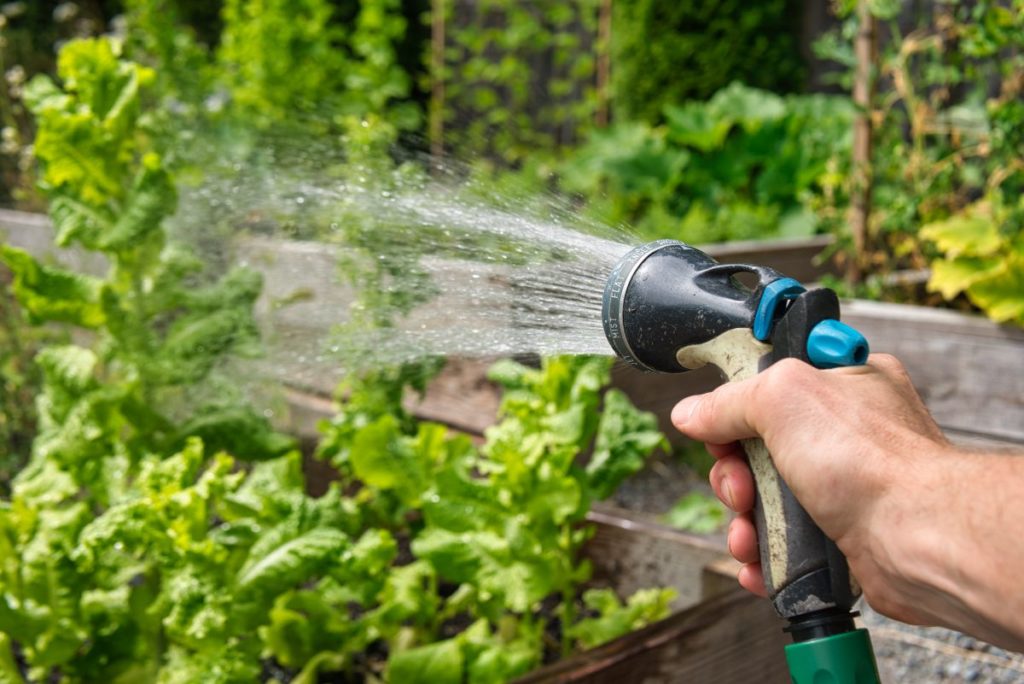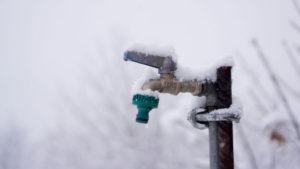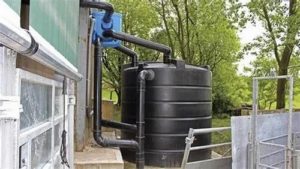As our planet grapples with the consequences of climate change, water conservation has become more important than ever before.
Whether you live in a dry desert or a lush forest, managing water resources wisely is important for sustaining life on your homestead.
From irrigation to waste management, there are numerous strategies that can help you save water and protect this precious resource for future generations.
By implementing these essential watersaving strategies into your daily practices, you can ensure the long-term health of your land, crops, livestock, and family.
Let’s dive in and explore some practical solutions to make your homestead more water-efficient and resilient.
Harvest Rainwater
Install a rainwater harvesting system to collect and store rainwater for irrigation, flushing toilets, and other non-potable uses.
The system typically consists of a collection surface, such as a roof, and a storage tank.
During rainfall, the collected water is channeled into the storage tank, where it can be stored for future use.
The tank can be equipped with a filtration system to remove impurities and improve the quality of the water.
Once the water is collected and stored, it can be used for a variety of non-potable purposes, such as irrigating gardens, flushing toilets, and washing cars.
By using rainwater for these purposes, you can significantly reduce your reliance on municipal water supplies, which can help lower your water bills and reduce your environmental footprint.
Many rainwater harvesting systems can be designed with a backup connection to a municipal water supply, so you can still access potable water during times of drought or other emergencies.
There are several benefits to installing a rainwater harvesting system.
For one, it can help reduce the strain on municipal water supplies, which can be especially important during times of drought or other water scarcity issues.
Using rainwater can help reduce your water bills, as it is often significantly cheaper than municipal water.
By using rainwater, you can help reduce the amount of stormwater runoff, which can contribute to flooding and erosion in your community.
Overall, installing a rainwater harvesting system is a simple yet effective way to save money and reduce your environmental impact.
Use Drip Irrigation
Implement drip irrigation, which delivers water directly to the roots of plants, reducing evaporation and runoff.
Implementing drip irrigation is an excellent way to optimize your water usage and ensure that your plants are receiving the right amount of moisture.
Unlike traditional sprinkler systems, which release water into the air and allow for evaporation and runoff, drip irrigation delivers water directly to the roots of the plants.
This targeted approach reduces the amount of water lost through evaporation and runoff, making it a highly efficient method of irrigation.
Drip irrigation systems can be tailored to the specific needs of each plant, ensuring that each plant is receiving the right amount of water at the right time.
This personalized approach can lead to healthier plants, higher yields, and a more efficient use of water resources.
By investing in a drip irrigation system, you can save time, money, and resources while also supporting the long-term health of your plants and the environment.
Mulch and Compost
Mulch and compost to improve soil health, increase water retention, and reduce watering needs.
Mulch and compost are two essential elements that can significantly improve soil health, increase water retention, and reduce watering needs.
Mulch, a layer of organic material such as wood chips or leaves, applied around plants, helps to retain moisture, suppress weeds, and regulate soil temperature.
It acts as an insulation blanket, keeping the soil cooler during the summer and warmer during the winter, which promotes healthy root growth and plant development.
Compost, a nutrient-rich soil amendment made from decomposed organic matter, not only adds essential nutrients to the soil but also improves its structure and fertility.
When combined with mulch, compost creates a synergistic effect that enhances soil health, fertility, and water retention.
By incorporating these two elements into your gardening routine, you can enjoy healthier and more resilient plants, reduce watering needs, and minimize the need for fertilizers and pesticides.
Plant Drought-Resistant Crops
Choose crops that are drought-resistant and require less water, such as succulents, grasses, and grains.
When it comes to planting drought-resistant crops, there are several options to choose from that require less water and are more resilient to dry conditions.
Succulents, such as aloe and agave, are ideal for hot and dry climates as they have thick, fleshy leaves that store water, allowing them to thrive even in conditions with limited rainfall.
Grasses like buffalo grass and blue grama are also drought-resistant and require less water than traditional lawn grasses.
Grains like oats, rye, and wheat are great options for dry areas as they are more resistant to drought and can survive with minimal watering.
By choosing to plant these drought-resistant crops, you can not only save water but also enjoy a thriving and healthy garden even during periods of prolonged dry spells.
Use Grey Water
Utilize grey water (wastewater from sinks, showers, and washing machines) for irrigation and other non-potable uses.
Utilizing grey water for irrigation and other non-potable uses is an excellent way to conserve water and reduce waste.
Grey water is the wastewater generated from sinks, showers, and washing machines, and it can be collected and used for a variety of purposes.
For example, you can use grey water to irrigate your garden, landscaping, and other plants, as well as to flush toilets and run washing machines.
By using grey water, you can save a significant amount of potable water, which is especially important in areas where water is scarce or expensive.
Grey water systems can be relatively low-maintenance and can be easily installed in both new and existing buildings.
It’s important to note, however, that grey water should not be used for drinking or cooking, as it may contain contaminants such as bacteria, viruses, and other pollutants.
Install a Pump for Irrigation
Install a pump to provide pressure to irrigate plants more efficiently.
Installing a pump for irrigation is a important step in efficiently providing water to your plants.
By investing in a high-quality pump, you can ensure that your plants receive the right amount of water at the right pressure, leading to optimal growth and health.
There are various types of pumps available, including submersible pumps, jet pumps, and solar-powered pumps, each with their own set of benefits and drawbacks.
Before selecting a pump, it’s important to consider factors such as the size of your irrigation system, the depth of your water source, and the desired pressure and flow rate.
It’s important to properly install and maintain your pump to ensure that it operates effectively and efficiently.
Proper installation includes selecting the correct piping materials and ensuring that the pump is positioned at the correct height to provide the necessary pressure.
Regular maintenance, such as cleaning the pump and check valves, can also help to prevent costly repairs and extend the life of your pump.
By investing in a reliable pump and properly installing and maintaining it, you can ensure that your plants receive the necessary water to thrive.
Monitor Soil Moisture
Use a soil moisture sensor to determine when your plants need water, reducing the amount of water wasted on overwatering.
To efficiently water your plants and avoid overwatering, it’s important to monitor soil moisture levels.
A soil moisture sensor can help you determine when your plants need water by measuring the amount of moisture in the soil.
This information can be used to adjust your watering schedule accordingly, reducing the amount of water wasted on overwatering.
By monitoring soil moisture, you can ensure that your plants are receiving the right amount of water without overdoing it, which can lead to healthier and more thriving plants.
Soil moisture sensors can help you detect potential issues such as overwatering or underwatering, allowing you to make necessary adjustments before any damage occurs.
By investing in a soil moisture sensor, you can optimize your watering routine and provide your plants with the perfect balance of moisture and nutrients.
Create a Water-Saving Budget
Track your water usage and set a budget for your homestead to ensure you are using water efficiently and effectively.
Creating a water-saving budget is an essential step in ensuring that you are using water efficiently and effectively on your homestead.
To start, you’ll need to track your water usage by keeping a record of your water bills or meter readings.
This will give you a baseline understanding of your current water consumption and help you identify areas where you can make improvements.
Once you have a better understanding of your water usage, you can set a budget that is tailored to your specific needs and goals.
Consider factors such as the size of your property, the number of occupants, and the types of crops or livestock you are raising.
Based on this information, you can set realistic targets for reducing your water usage and allocate resources accordingly.
For example, you might prioritize installing rainwater harvesting systems, implementing drip irrigation, or upgrading to low-flow appliances and fixtures.
By taking a proactive approach to managing your water budget, you can ensure that you are using this precious resource in a way that is both sustainable and cost-effective.
Want More? Dive Deeper Here!
Hey there! If you’re the type who loves going down the rabbit hole of information (like we do), you’re in the right spot. We’ve pulled together some cool reads and resources that dive a bit deeper into the stuff we chat about on our site. Whether you’re just killing time or super into the topic, these picks might just be what you’re looking for. Happy reading!






